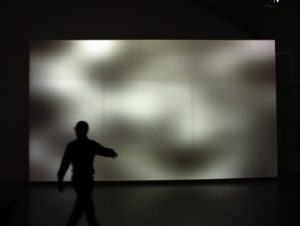ghost in the machine
nameless, timeless … speed of light
and when is a loss?
 July 1, 2003, San Jose, California: Although I am seated at my desk in San Anselmo, right now in San Jose hundreds of my 800-numbers are being fitted into a seven-foot cabinet inside the switching room of a long distance company.
July 1, 2003, San Jose, California: Although I am seated at my desk in San Anselmo, right now in San Jose hundreds of my 800-numbers are being fitted into a seven-foot cabinet inside the switching room of a long distance company.
It has been a very techno day; and to my shock I have just heard from my very techno friend Harvey, who died several years ago.
Moving those telephone lines was the final step of the Bloggard Migration Strategy (BMS).
Why migrate? Marin County, where we live, is perhaps the most expensive place in California. To buy the modest house we rent would cost over $700,000. In Montana or even a hundred miles north of here, this house would cost perhaps $150,000. So we decided to move.
In preparation, I consolidated all my local voicemail and 800-number voicemail lines into one place. Because their machine-support will no longer require my personal touch, Adrienne and I are now free to relocate, because I can operate my voicemail office, and my megatar workshop, anywhere.
As I tested telephone lines, I found one I’d forgotten. Some years previously, shortly before he died, my techno friend Harvey Warnke got a voicemail account from me.
Harvey was a unique spirit. Self-educated, he’d learned electronics working in the planetarium, then learned to design the light shows that appeared in the early days of Haight Ashbury psychedelic rock shows. He worked on movies, too.
If you’ve seen the remake of Invasion of the Body-Snatchers, in one of the later scenes there is the meow of a cat; that was Harvey’s cat, whom he named Shi*ty Kitty.
If you saw the movie War Games, in the final war-room scene you saw the huge screens that show missiles launching all over the world; It was Harvey who made those huge screens with their flashing images.
Long ago, he and I traded a project. He designed relays and sensors for the Line Seizer device I built for Network Answering Service, and I in turn did the software programming his Counter Intelligence device, which counted frames of film on a film-editing table for splicing movies. It was a grand time. Harvey was a brilliant engineer, who drove a turbo-charged motorcycle at vast speeds. He was always laughing, always fun.
He was a part of life, a part of my life, and it was a good time.
But his death came suddenly.
He’d contracted some kind of virus, and the virus, invading his heart, made his heart very large and very weak. And then one day, his heart stopped.
At the time, I couldn’t bring myself to delete the voice mailbox with the recording of his voice. I forgot it was there, until now.
Sitting here at my desk in San Anselmo, calling into the machine, suddenly I hear my friend talking.
“Hi, this is Harvey,” he says, “I’m not here right now. Leave me a message, and I’ll call you as soon as I can.”
His voice has survived the years and the equipment changes. He promises to return calls, but he will not.
His voice remains, in the machine.
And you know what?
I still can’t erase it.
 St. Louis, Winter 1967: I was
St. Louis, Winter 1967: I was 

